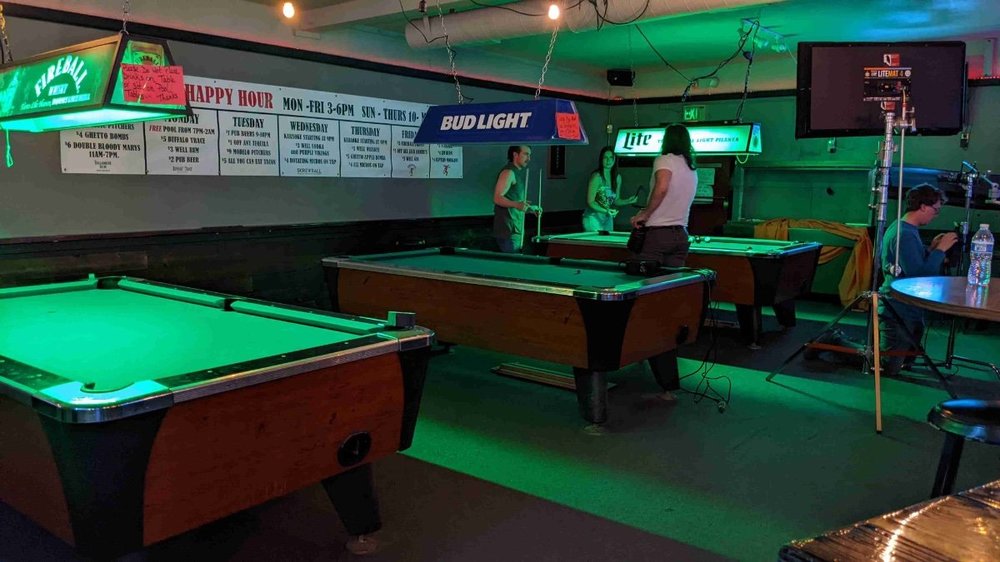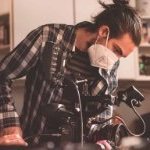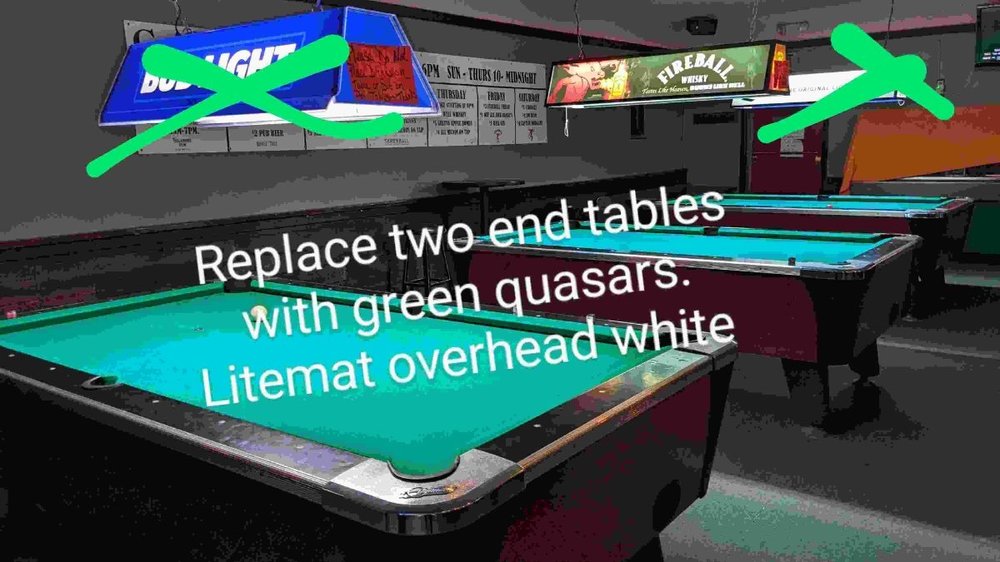-
Posts
20 -
Joined
-
Last visited
Posts posted by Mateusz Czopek
-
-
Hey all,
I'm starting pre-production on a new short film and thought I'd jot down some thoughts here as it may help give me clarity and some folks may find it interesting!
The short is a currently loose-scripted docu-drama ala Nomadland following a young korean boy who goes to the market for the first time in America. It's directed by Joon Cho, who is a USC graduate but grew up in Boise (where I'm from and where we're shooting the film.) I've worked on two of his short films before, although I was 1st AC on the last one. His usual DP is a good friend of mine, but he couldn't make the dates due to working on a feature in LA during the summer. Joon's a great director and brings a great energy to set and knows what he wants, so I feel very lucky to be able to shoot this particular project of his.
Currently in the very loose planning and creative stages, finding references, lookbooks, dreaming about what the film could be. Since a lot of it is dependent on what locations we shoot at and on the young actor, it's going to be a very small crew that will have to move quickly. Only 1 AC and 1 Gaff/Grip. I'm hoping to shoot on the ARRI Alexa 35 or the RED EPIC with either Zeiss CP.3s or the Standard Speeds, although currently I'm leaning towards the CP.3s. I'm borrowing equipment from my work so the shoot will take place over two weekends, with possibly a Friday after working hours.
I've been testing the different lenses and cameras, and of course my preference is the Arri 35, the sensor is quite superior than anything I've worked with and it has internal NDs which will be helpful for this more run and gun documentary style film, rather than wearing NDs in the mattebox with RED.
We want to have more natural light as most of it is outside and we don't want to overwhelm the kid actor with a lot of lighting equipment or make it feel like a big deal. This does lead me to believe that I should try and light more from the outside in interior locations such as his house, so there's not a bunch of smaller lights inside his space, which actually means I'd need bigger lights and more light control. Quite the paradox.
That's about it for now, hoping for more to come as things start getting closer and closer and we finalize equipment and lighting plans, I'm sure I'll have more to share.
See ya next time!
-
 1
1
-
-
Seems extremely use-case for me. I would think you could achieve a similar look with various diffusion filters if you wanted that softer look. from what they show on their own youtube videos, the effect looks super intense even at "subtle". I don't think film looks need to be that soft/diffused and people have a weird thought that film is this super soft low contrast look when it's really not. Certainly not as sharp as digital, but nowhere near as soft as those tuners look to be.
That said they might have a use for dream sequences or something more stylized, but I wouldn't see a use in buying them.
Also, hey, fancy seeing you here!
-
You also don't want any additional noise, which click marks can make, to happen during a take with audio rolling.
-
 1
1
-
-
There's also this incredible scene from Children of Men that goes from inside the car to outside stitched together.
Happens near 2:25
-
Hey all,
I was testing two sets of lenses - the Zeiss CP.3s and Arri/Zeiss Standard Speeds on the Alexa 35 for a side by side test following the outline in this article by American Cinematographer: https://theasc.com/blog/shot-craft/the-generic-lens-testWhen I was testing the 32mm Standard Speed I noticed there was a weird flare that happened when I had it wide open (T2.1) but not at any other stops. Any idea what would cause this and if it's indicative of something in the lenses needing to be fixed/tuned up? I didn't notice it on any of the other standard speeds otherwise I'd probably just mark it up to a lens characteristic.
I've attached an image from the test.
-
On 2/13/2023 at 4:12 PM, Gregory Irwin said:
I agree with you about the armorer but Baldwin had a responsibility as an actor and as a producer. He failed at both. There is so much more to this story to understand. Attached is a very in depth investigative report on the events and overall professional misconduct on that production by 60 Minutes Australia. Even though viewer discretion is advised, it offers a greater understanding of what happened that day and the days leading up to the tragedy.
G
An enlightening and horrifying interview. Hard not to get emotional at it, especially when they show the crew on set.
"There's a direct correlation between budget and safety..."
-
In my experience, I find that lighting for B&W Digital is more about trying to create dynamic shots through gradations of light and how light plays in the shot, because you don't have color to make a shot more interesting or pop you have to do this with light. Harder light typically plays better in B&W, but that may be a more personal choice and depends on the look you're going for. I definitely recommend having a LUT that is close to what you want the final image to be - a low contrast B&W or a higher contrast B&W, whatever you're more going for. And it's more okay to mix tungsten and daylight lighting since it'll be more about how the light is hitting the subjects and not about the color of the light.
Hope this helps, I've shot a few short films on B&W digital and a feature in B&W!
-
 1
1
-
-
Here's that setup I showed from the lighting sketch. This is just a photo from my phone. We ended up having to switch the first two light domes because the first one didn't fit the 4ft quasar tubes. To the right of the image is the gaffer getting the litemats ready and the very left person is one of the directors who acted in this scene.

-
Hi all,
I thought I would share some notes and thoughts from a feature I recently shot back in April for those that are interested. What started out as a 25 page short ended up becoming a 65 page feature when the two directors had a change of heart! 3 days before shooting, the lead actress (who had the main location for the film) dropped out of the film, and rather than recasting her, the two directors decided to pivot and completely change the story with the remaining actors and locations they had. So, a well planned and shot-listed film got thrown out the window as we all turned to improvising what to do every day.
I should note that this is truly a low budget feature with most people working on it (including me) coming fresh out of film school working for very little or no money. The budget mostly went towards camera, lighting, food, and smaller expenses. We shot on the Arri Amira with Zeiss Ultra Primes. Red Finch Rental in Salt Lake City gave us a great deal on the camera package and were super accommodating towards us. Their 50mm was out for repairs so they offered a different lens set to me, but instead I decided to keep the Ultra Primes and they shipped the 50mm out once they got it. Our lighting package consisted of 2 1.2k HMIs, 2 litemats, 2 quasar rainbows (RGB was needed and played a big part later on in the film), a 12x12 frame and an 8x8 frame, as well as some bounce cards and other grip equipment. I also had some tungsten units on hand including a 2k open face and some 1k fresnels, but unfortunately never had an opportunity to use it which I regret. This is the first feature I've ever shot, and have worked on some as AC and in Grip and Electric before, as well as DPing some shorts in and out of film school. There are definitely some moments I wish I had lit differently or had thought of some trick on the day, but those are the lessons you learn!
Production was a bit rough as we had to pivot and change all of our plans and often I was not made aware where to be or what we were shooting until the day of when I got on set. This made it hard for me to light things properly as I typically am a big planner and big believer in pre production work for lighting. However, there were some locations that had similar scenes to the original feature which I could light according to my original plans.
Here is a lighting "sketch" I sent to my gaffer when we were scouting the location for this bar. The directors and I wanted a slightly surrealist 70s feeling to the film, with color playing an important part in various locations. We ended up turning off the middle pool table light for more contrast and shooting mostly around the end table with a litemat set to warm light to match some practical bulbs that were hanging from the ceiling and to have a neutral color on the actors.
The 2 1.2k HMIs were my bread and butter for most of the shoot, playing for both daylight and moonlight in a lot of scenes, typically using the litemats or quasars as fill. I didn't end up using the 12x12 frame or 8x8 as much as I would have liked as most of the outside locations were either remote, rocky, or it ended up being a cloudy day. Overall, I made a lot of mistakes but I think I did some things right as well. I wish I had been able to slow down and think more about lighting than I had, but often we were rushing to get out of a location in time or get done with the day. I don't have any stills or videos to show yet, but hopefully soon in the coming months! We're doing some reshoots and additional shooting at the end of August, so I can share more stories from that.
The shoot was 2 weeks long which of course is never enough time for a feature. Hopefully I can take what I learned to the next one. I would love to hear from anyone about your first feature experience!
-
 1
1
-
-
Thanks, that's the book I ended up getting!
-
Hey all,
I'm wanting to find a book about the history of cinema - the progression of films and important films that came out over the years. Ideally something that covers more than just American films and the typical surface films that everyone knows - something that's a bit more in depth. Any good recommendations or suggestions?
Thank you!
-
Greig Fraser did a Clubhouse Conversation about Dune and he talks more about how he achieved his night looks. He does say some of it was on stage, with painted backgrounds.
Here's a link to it, he begins talking about nighttime shots around 22 minutes in.
-
 2
2
-
-
On 10/24/2021 at 6:04 PM, Benjamin Handler said:
Hello all,
Just finished watching the new Dune film. It's beautifully shot. In particular I enjoyed the night exteriors in the desert. The film has about ~30 minutes of night exteriors that feel like this beautiful, diffuse blue hour, but last for what must've taken days or weeks of actual production time. Any idea how this was done? From my experience shooting blue hour, you don't get much time and it's a race to film before you lose light, and can be tough to match in post with the light constantly changing. That seems prohibitive for a production of this size, though I know Chloe Zhao has done scenes like that (though much more contained scenes)
Am I naive, and this is on a stage? Or some sort of elaborate day-for-night? I can't imagine lighting the desert would be possible, as there are many expansive wides. Nor does this feel like a stage.
Can't attach screenshots unfortunately but see here on the Dune trailer below,
close-up : https://youtu.be/n9xhJrPXop4?t=86
wide : https://youtu.be/n9xhJrPXop4?t=170
Appreciate your all's thoughts
Not certain because I haven't seen the film or even seen much behind the scenes, but I know Greig Fraiser, the DP, is a big fan of LED Volumes, which can replicate sunset/blue hour for as long as they want and provide realistic backgrounds. Because they're LEDs, they also provide lighting that's accurate to the image being displayed.
Again, not sure if that's what they did, but that would be my guess on what you've said and on the DPs preferences.
Here's more information about Volumes:
-
Thanks everyone for the responses, unfortunately our production got cancelled for the time being, but I'll be sure to keep all of this in mind next time!
-
Hey all,
I'm shooting a short film coming up in September, and one scene involves two of the characters fighting roughly in a river. The river that we'll be at is fairly still, next to a dam. The director wants to do most of the fight handheld and close to the action. I planned on having a covering over the camera and having a spotter with me in the river to make sure I don't fall over, but was wondering if anyone had any other advice for shooting close to water with handheld?
I'm mainly worried about taking a stumble and dropping everything into the water...
-
I'm not super experienced, but looks to me that in the reference photo the windows with the curtains are blown out - they're just hidden behind the curtains. Maybe getting longer curtains in that location would help cover up the overexposed windows? Otherwise, I would recommend either gelling the window(s) that you need to see through. The nice thing about lights is that they can be scrimmed or dimmed (if LEDs).
The reference photo also looks like it's slightly underexposed, which will probably help to counteract the light. It also depends what time of day you're shooting and which way the windows are facing, this almost seems like a setup that could be done night for day if you have enough lights. Knowing what time of day you're going to be shooting and planning it as best as you can to shoot the scene when the sun is in your favor will help a lot.
-
What time of day are you shooting outside? Are you shooting with actual noon sunlight or at some other part of the day? Noon sunlight is very harsh and top down on people, so you'd need a big light like the 20k that David mentioned in order to replicate sunlight. Often times silks and other diffusions are used to soften the sunlight at noon, but if you're going for the harsh sunlight look, probably the best thing you can do is shoot at noon if you can and perhaps bring some light control like bounces or nets to help shape the light the best you can. At least from my experience this would be best if you can't afford a bigger light.
-
Thanks David and all for your help. Still wrapping my head around it, but I appreciate all the wisdom!
-
Thanks for the explanation, Stephen. So the lower ISO is more for me to "overexpose" the image and thereby utilize more of the higher end of the dynamic range rather than actually changing exposure with it? I would think that the cleaner image would come from the lower ISO, and have less noise in the shadows because of that, but if I'm shooting in LOG, changing the ISO won't matter? So then I have to overexpose by a stop or so in order to get a cleaner image? I wasn't aware that changing the ISO didn't matter in LOG, thanks for sharing your knowledge!
-
On 3/27/2021 at 9:58 AM, Stephen Sanchez said:
Why overexpose by a stop? Because if you're in a dark scene, then the highlight latitude isn't being utilized anyway.Sorry for the ignorance, but trying to wrap my brain around this still. Do you mean overexpose by a stop based on your lower ISO (400 for example) or for your 800 ISO? So overexpose the 400 so it's essentially the same as your 800, but with cleaner shadows because of the lower ISO?
So say you're shooting a scene with a single light, and want clean shadows. The light reads a T/8 at 800, so a T/4 at 400, so you would want to be at a T/2? Have I got that right?






FOCUS ON CAMERA - Coming Soon!
in Camera Assistant / DIT & Gear
Posted
Awesome Gregory, can't wait!
Already signed up to get a notification when it launches!